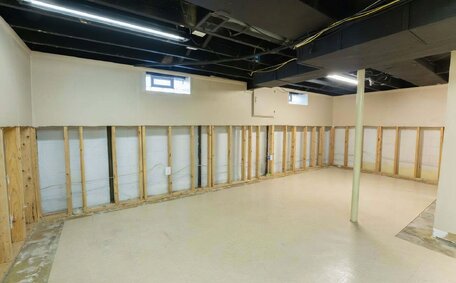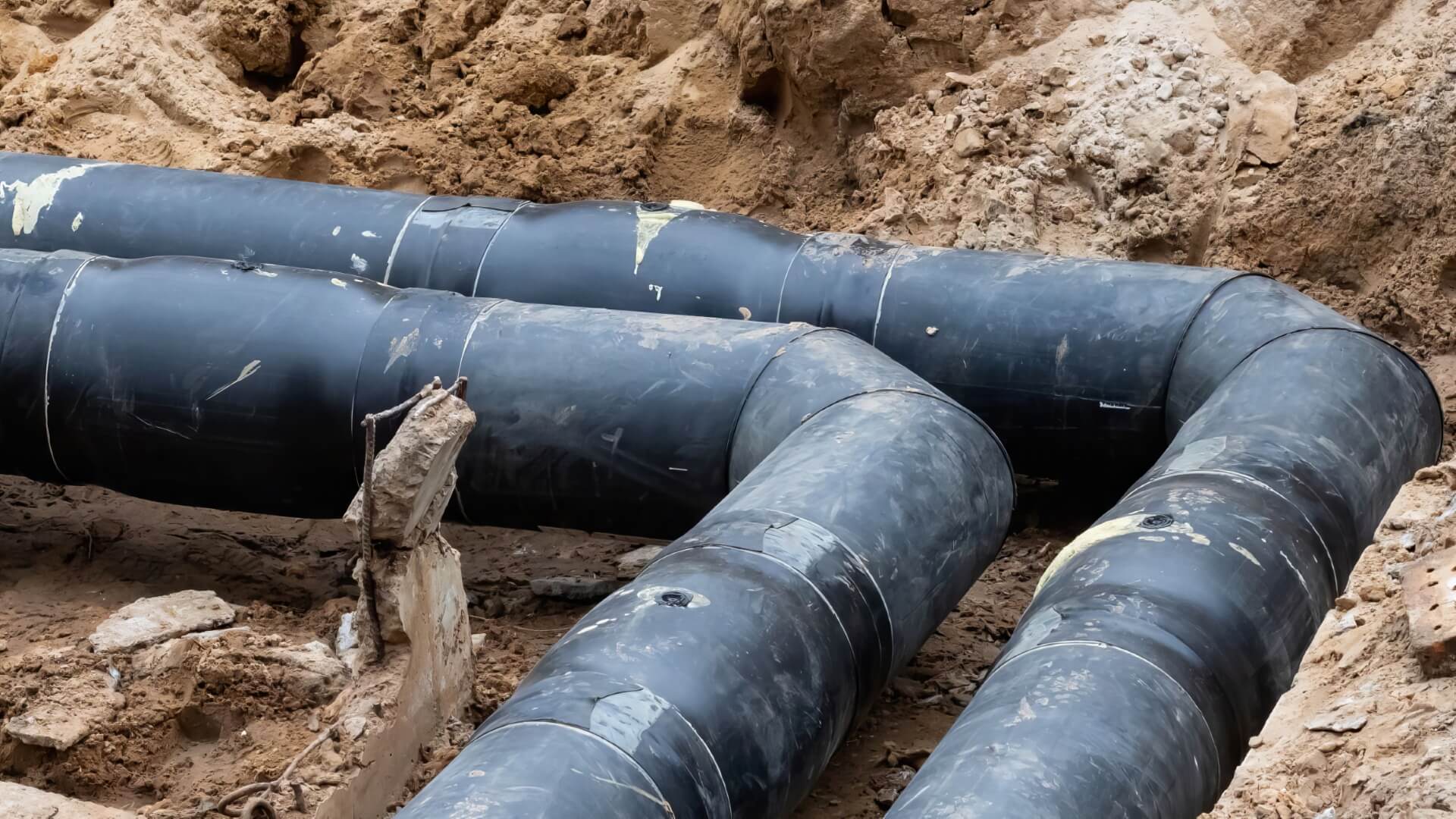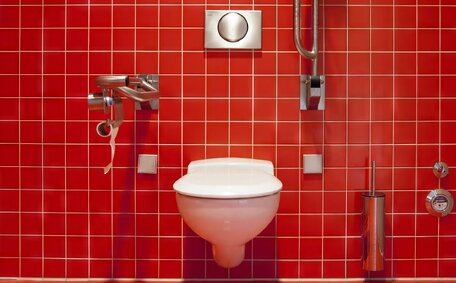Locating the Main Water Shutoff Valve
The main water supply valve, also known as the stop valve or isolation valve, is essential for shutting off your home’s entire water supply. This valve is essential in emergencies, enabling quick water shutoff to prevent flooding and water damage.
Typical locations for the main shutoff valve include:
- Near your meter box - The shutoff valve may be attached to your water meter or inside the concrete meter box. Check for a prominent valve on one side of the meter.
- In the basement or crawlspace - If your home has a basement, look for the main shutoff valve where the water line enters.
- In the garage for slab foundations - For slab foundations without basements, the main shutoff, usually part of the mains water supply, is often in the garage where the pipes enter the house.
- Outside near the property line - Some shutoff valves are underground near the boundary line close to the street.
- Near the gas hot water heater - Look for the main shutoff on a wall close to the hot water system.
You can identify the main shutoff valve by these characteristics:
- A large metal handle or wheel that rotates
- An open/closed label on the valve showing flow direction
- An engraved "main valve" marking
- A larger pipe size compared to others
- Connection points for pipes entering and exiting the home
If you’re unable to locate your inside main water shutoff valve, possibly hidden beneath kitchen units, seek the local stop tap or contact a licensed plumber for assistance. Familiarizing yourself with the location and performing regular checks of your inside stop valve can save crucial time in a plumbing emergency.
Identifying the Shutoff Valve Type
There are two main types of stop valves in most homes - gate valves and ball valves. Knowing how to correctly turn the valve to stop water flow is crucial.
Gate Valves
Gate valves, common in older homes, have internal stop mechanisms with recognisable features:
- A wheel handle that lifts up to open and presses down to close
- Often made of bronze or brass
- Can be difficult to operate and more prone to leaks
Ball Valves
Newer plumbing systems primarily use ball valves, which include:
- A lever or paddle handle that rotates 90 degrees between open and closed
- Usually made of plastic or metal
- Provides smoother operation and better sealing than gate valves
To verify your valve’s functionality, turn off the water by rotating the handle to the 'closed’ position and check each sink and toilet for water flow. No water flow confirms a successful shutoff with the main valve. If water keeps flowing after a main shutoff operation with the valve closed, contact a licenced plumber immediately.
Steps to Turn Off the Main Valve
To safely and effectively turn off your main water shutoff valve, follow these steps:
- Locate the valve, which may be near your water meters, in the basement, crawlspace, or other areas of your home.
- Clearly identify if it is a gate or ball valve based on the handle type and markings.
- To shut off a gate valve, turn the wheel handle clockwise until it stops and resistance increases slightly.
- To shut off a ball valve, rotate the lever handle 90 degrees until it is perpendicular to the pipe.
- Go to the highest and lowest faucets in your home and turn them on to test for water flow. There should not be any water flowing.
- To turn the water back on, reverse the process by turning the valve counterclockwise (gate valve) or parallel to the pipe (ball valve).
- Open your faucets again slowly to let air escape and restore proper water pressure.
- If water continues flowing with the main valve closed, reach out to a licenced plumber straight away, as this can cause subsequent issues.
Avoid forcing the main water valve beyond its stopping point to ensure you can reliably turn off your mains water supply in the future. Turn off your home’s water supply any time repairs are needed or before extended vacations.
Testing that the Water is Fully Shut Off
After turning your water off at the main shutoff valve, confirming it is fully shut is a critical next step. Testing ensures that water supply to your home is indeed discontinued, as negligence can spawn unforeseen leaks or other issues during your absence.
Follow this process to ensure you can shut off your water completely:
- Go to the faucet located furthest from the shutoff valve, such as an upstairs bathroom sink.
- Turn the faucet on completely, ensuring that both hot water and cold water flows are checked.
- Check the water flow - there should be none at all.
- Flush all toilets in the home - no water should fill the tank.
- Examine all taps, showers and outdoor hose connections as well for any sign of water.
- If you find any location still has flow, immediately shut off water to your property again checking for tight closure. Contact a licenced plumber to inspect and repair the valve if water persists.
Completing these steps helps ensure that the main water supply is off, preventing potential damage to your plumbing system. Performing this procedure ensures an effective method of turning off water that shields your plumbing system and prevent water from inflicting catastrophic damage to your dwelling while you are away.
Turning the Water Back On
After completing repairs or maintenance, follow these steps to safely turn your water back on:
- Go to the main water shutoff valve, which you previously used to turn off water main, and prepare to open it.
- Place a bucket under the home’s lowest tap, like a basement laundry sink, to catch initial water and protect the floor.
- Slowly turn the valve counterclockwise (for gate valves) or parallel to the pipes (for ball valves).
- Introduce water flow into your lowest tap just slightly at first to allow air to escape and water to trickle through gently.
- Once water runs smoothly from the tap, take a few moments to supply your pipes fully to purge any remaining air or sediment.
- Proceed to the next lowest tap, such as the kitchen sink, and repeat the procedure until all air is removed.
- Climb to upper floor taps and showers and open them in turn to complete venting.
- Check taps and ensure full water pressure is restored throughout your home’s plumbing.
Gradually opening taps manages hot and cold water pressures and avoids sudden spikes that can harm tankless water systems. Lastly, check all valves, taps, joints, and fittings for leaks. Contact a licenced plumber immediately if you have any concerns about isolation valves or other plumbing fixtures.
When You Should Turn Off the Main Valve
There are a few key situations when it is wise to shut off your main water valve:
- Going on vacation - Turning off your home’s water supply at the main valve before travelling helps prevent leaks that could cause flooding and water damage while you’re away.
- For plumbing repairs, shutting off the water supply via the main valve is necessary before altering sinks, toilets, pipes, water heaters, or other fixtures.
- Preparing for freezing weather - In cold climates, Turning off the main water supply and draining pipes before frigid weather sets in avoids the dilemma of frozen and burst pipes.
- Addressing leaks or burst pipe incidents - If you have a major uncontained leak or pipe burst, immediately activate the main shut off valve to limit water loss and damage.
Our earlier guidance on locating, testing, and shutting off the water flow from your main valve is pertinent to these situations.
Understanding when and how to effectively use your main water shutoff valve enables fast action in emergencies, helping to prevent potential disasters.
Preventing Valve Seizure
To prevent your main water shutoff valve from seizing, know its location and practice turning it off regularly for maintenance and to keep it functioning smoothly.
Follow these tips to keep your shutoff valve functioning properly:
- Annually, exercise the valve by fully turning the stop tap from open to closed several times. This ensures the working parts do not become stuck from mineral deposits or corrosion.
- Spray a suitable penetrating oil or lubricant on the valve for potable water systems, letting it penetrate for 15 minutes before operating the valve.
- Visually inspect your stop valve and connected pipes for any signs of leakage, rust or other deterioration. Contact a licenced plumber immediately if you observe issues.
- Mark the valve location so it remains visible. Ensure access is not blocked by objects or storage.
- If you have a gate valve, replace it with a 1/4 turn ball valve, which seals better and is less prone to jamming.
Conducting this straightforward yet vital maintenance annually decreases the likelihood of valve seizure, essential for managing such events. A functioning main shutoff valve enables swift response to plumbing emergencies, preventing extensive water damage and costly repairs.
Handling Plumbing Leaks and Damage
If you discover a leak or water damage in your home, follow these steps immediately:
- Turn off the water using the main shutoff valve located near your water meter or inside your home. Refer to previous sections for help locating and operating the valve.
- Call your water supplier, St Peters Plumbing service at 1300 349 338 or email jobs@stpetersplumbingservices.com.au. Provide your name, address and contact details.
- Clearly describe the leak location, severity, visible water damage and any other relevant details.
- Our professional plumbers will schedule a prompt onsite inspection and diagnosis visit for burst water pipe issues and other concerns.
- We carry out emergency leak repairs 24/7. Our technicians will address burst water pipes, seal cracks, replace fitting seals and execute additional measures to halt the leak.
- For extensive water damage, likely from burst water pipes, we coordinate with certified restoration specialists for drying, sanitation, repairs and necessary rebuilds.
Acting quickly helps minimise flooding spread and secondary moisture damage. St Peters Plumbing has the experience, equipment and partners to promptly fix leaks and remediate resultant harm to return your home to pre-incident condition.
Conclusion
Knowing how to shut off and properly operate your main water shutoff valve is essential for preparedness in any plumbing emergency. Promptly shutting off your water supply can mitigate catastrophic flooding, leaks, and prevent extensive damage to your property.
We hope this guide has provided you everything needed to safely manage your water system. Keep the valve visible and maintained to avoid jamming. Schedule annual plumbing inspections to identify leaks or other issues early.
For information on our services or to book a licenced technician from St Peters Plumbing, call us on 1300 349 338 or email jobs@stpetersplumbingservices.com.au. Our professional team stands ready to support all your residential and commercial plumbing needs.






